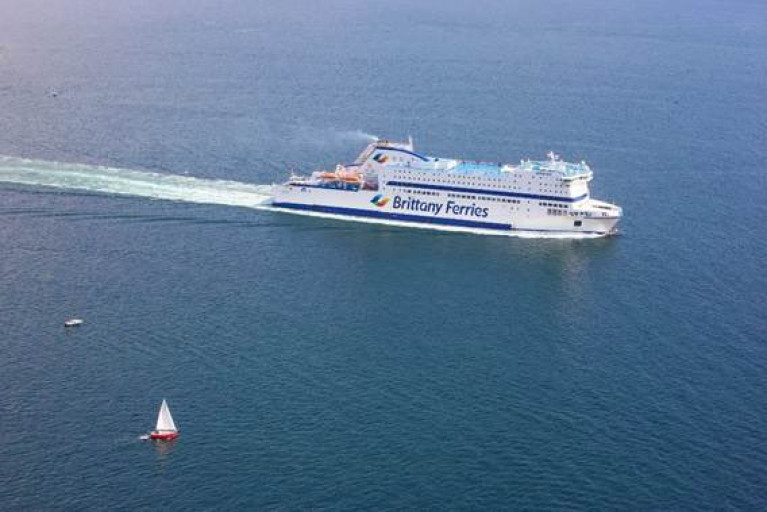Displaying items by tag: More New Routes
Further Expansion By Brittany Ferries, Increases Rosslare's European Services to 32 Weekly
The Government's Operational Update review on trade a month after the post-Brexit transition ended, Afloat adds narrowly missed inclusion as yet another ferry development arose today, as Brittany Ferries announced new 'freight' routes increasing capacity directly to mainland Europe.
Glenn Carr, General Manager of Rosslare Europort welcomed the announcement by Brittany Ferries of a further weekly service each between the Co. Wexford port and St Malo and Roscoff, in Brittany, France.
As also reported today, the revived Roscoff route resumes service this Thursday, 4th February (this follows, Afloat adds the route's debut last year albeit also available for passengers).
The new services combined bring to 32 – sixteen in each direction – the number of weekly direct services across all shipping operators between Rosslare Europort and the European continent, establishing Rosslare as Ireland’s number one port for direct European services.
The first month of trading in 2021 has seen sensational results at Rosslare Europort. Despite the challenges of Covid 19 and the current difficulties with the UK post Brexit, overall Freight traffic at the port is 45% ahead when compared to the same period last year.
While UK traffic is down 49% for January, European Freight is up an incredible 446% year on year with unprecedented demand for the new direct services operating from Rosslare Europort to mainland Europe.
Commenting on the first month of trading for 2021, General Manager, Glenn Carr stated “We are absolutely delighted with how the market has reacted and supported our direct services from Rosslare to Europe, and welcome Brittany Ferries further commitment to the needs of Irish industry with this new service announced today.
The demand has been phenomenal for the new and expanded services from all of our operators, and these results prove the strategic importance and potential of the port to our customers, industry and our economy. Through the significant challenges with Covid and Brexit, great credit must go to all colleagues working at the port and our shipping lines who have provided exceptional frequency and capacity on the now 32 services a week between Rosslare and Europe. We will continue to work with shipping lines and Irish industry in identifying further opportunities to meet market demand, and ensure that we build on the work to-date at the port to maximise the role of Rosslare Europort for both the South-East and wider economy of Ireland.
These are very exciting times at Rosslare Europort with the increase in business, commencement of our €35 million Masterplan and our recent proposal to Government for the port to be further developed as the Off-Shore Wind Energy Hub for the country and I look forward to working with all stakeholders in achieving this.”
The new Brittany Ferries service is the latest boost in 2021 to direct services between Rosslare Europort and the Continent.
So far, we have seen:
- New six-times weekly DFDS Rosslare Europort to Dunkirk service commence
- Expansion of Stena Line Rosslare Europort to Cherbourg services from three services each way weekly to six services each way weekly
- Stena Line capacity further increased, with the new Stena Embla redeployed to the Rosslare to Cherbourg route since Thursday 14th January
- Brittany Ferries began its weekly each way service between Rosslare Europort and Cherbourg two months ahead of schedule, in addition to the operators ongoing twice weekly each way service between Rosslare and Bilbao.
- In addition as Afloat earlier reported, Brittany Ferries is to start a new weekly Rosslare to St Malo route






























































